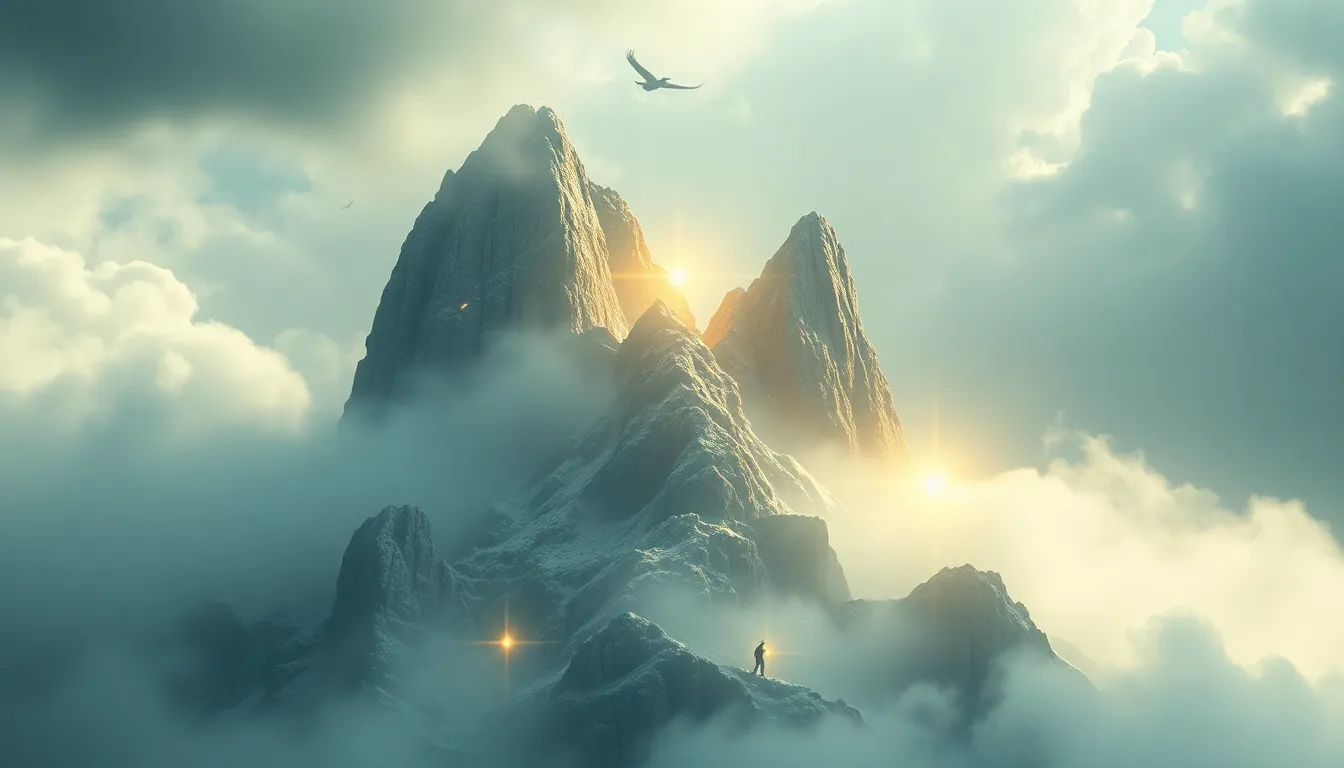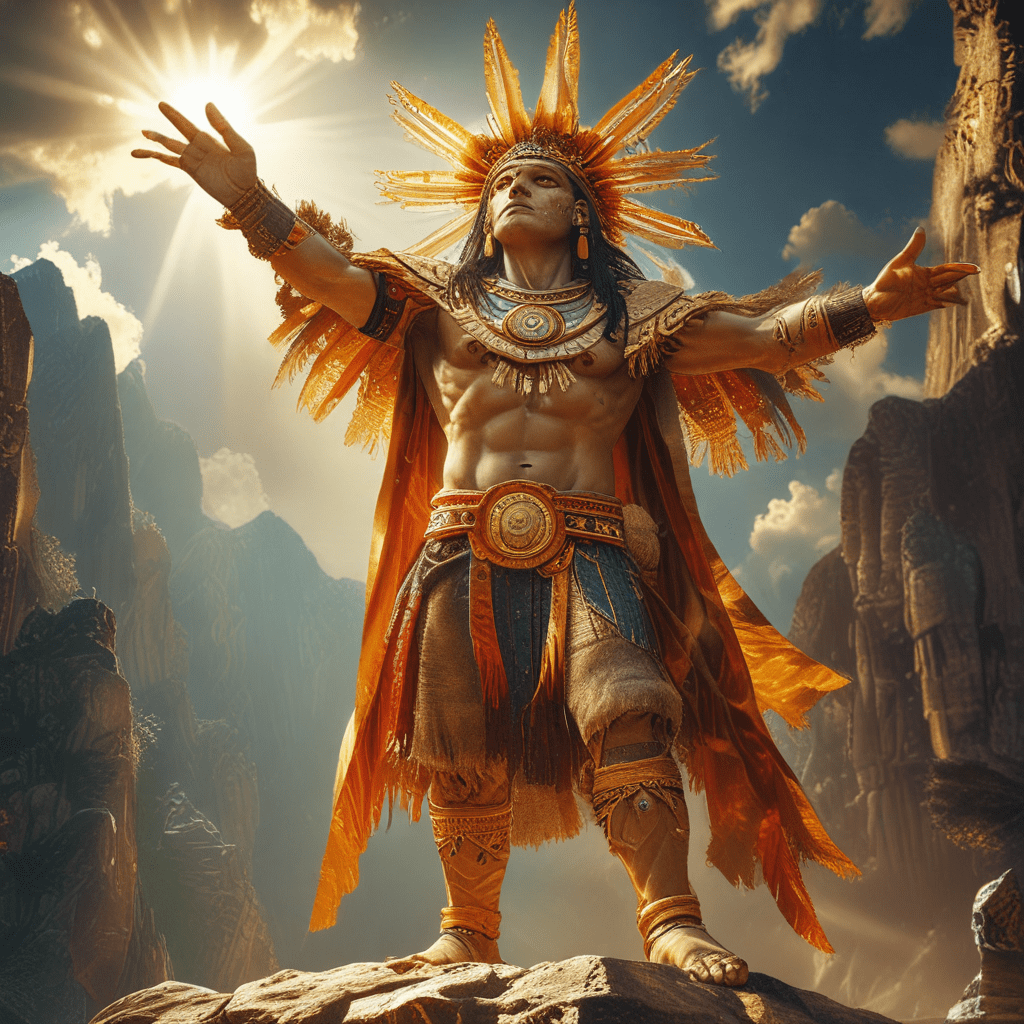The Mountain of the Ancient Spirits: Myths of Ethereal Beings
Introduction to the Mountain of the Ancient Spirits
The Mountain of the Ancient Spirits looms large in the folklore of various cultures, serving as a nexus of myth and belief. Revered as a sacred site, this mountain is often associated with ethereal beings, which play a crucial role in the spiritual narratives of the surrounding communities. These beings, viewed as manifestations of nature or ancestral wisdom, embody the essence of the mountain and its mystical allure.
Geographical and Cultural Context
Nestled among towering peaks and lush forests, the Mountain of the Ancient Spirits is characterized by its rugged terrain and breathtaking vistas. Its summit, often shrouded in mist, is believed to be a bridge between the earthly realm and the spiritual domain. The mountain is surrounded by several cultures, each with its own unique interpretations of the spirits that inhabit it.
Notable civilizations that have thrived in the shadow of this mountain include indigenous tribes, ancient empires, and modern communities. These cultures share a reverence for the mountain, viewing it as a source of life, wisdom, and protection. The interplay of geography and culture has solidified the mountain’s status as a central figure in local mythology.
The Origin of the Myths: A Historical Perspective
The myths surrounding the Mountain of the Ancient Spirits have evolved over centuries, deeply rooted in historical events and natural phenomena. Early inhabitants often witnessed extraordinary occurrences, such as lightning storms, avalanches, or the play of shadows, which they interpreted as the presence of otherworldly beings.
As communities grew and stories were passed down through generations, these myths became a tapestry woven with historical threads, reflecting the struggles, triumphs, and spiritual beliefs of the people. The mountain became a symbol of resilience, embodying the collective memory of those who lived in its embrace.
Types of Ethereal Beings Associated with the Mountain
The ethereal beings linked to the Mountain of the Ancient Spirits can be categorized into several types, each with distinct characteristics and roles:
- Nature Spirits: Often depicted as guardians of the forest and wildlife, these beings are believed to maintain the balance of the ecosystem.
- Ancestral Spirits: Representing the wisdom of ancestors, these spirits guide the living, offering protection and insight.
- Guardians: Powerful entities that protect the mountain and its secrets, these beings are often invoked during rituals for strength and security.
Each type of spirit is integral to local mythology, influencing the way communities interact with their environment and each other.
Prominent Myths and Legends
Throughout history, numerous myths have emerged from the Mountain of the Ancient Spirits. One prominent legend tells of a great storm that descended upon the valley, threatening the lives of the inhabitants. In their desperation, they called upon the mountain’s spirits for aid. The spirits, moved by their plight, calmed the tempest, teaching the community the importance of respect for nature and the interconnectedness of all beings.
Another well-known tale involves a brave warrior who climbed the mountain to seek the wisdom of the ancestral spirits. Upon reaching the summit, he encountered visions that revealed the path to peace for his people. This story emphasizes themes of courage, humility, and the pursuit of knowledge.
Rituals and Traditions Linked to the Mountain
The Mountain of the Ancient Spirits is the focal point of various cultural rituals and ceremonies. Communities gather to honor the ancient spirits through offerings, prayers, and dances. These rituals are often conducted during specific times of the year, aligning with seasonal changes and agricultural cycles.
Some notable traditions include:
- Spring Festivals: Celebrating renewal and fertility, these festivals often involve communal feasting and storytelling.
- Harvest Ceremonies: A time of gratitude, where offerings are made to the spirits for bountiful crops.
- Rites of Passage: Marking significant life events, such as births and coming-of-age, where the spirits are invoked for blessings.
These traditions not only connect the community with their spiritual heritage but also strengthen bonds among individuals.
The Role of the Mountain in Spiritual Practices
The Mountain of the Ancient Spirits serves as a vital site for pilgrimage and meditation. Many individuals embark on journeys to the mountain, seeking solace, enlightenment, or guidance from the ethereal beings believed to inhabit its heights. The act of climbing the mountain is often seen as a metaphor for personal growth and spiritual ascension.
Spiritual beliefs surrounding the mountain emphasize:
- The importance of nature as a spiritual guide.
- The belief that the mountain holds ancient wisdom accessible through meditation and reflection.
- The idea that connecting with the spirits fosters a sense of belonging and purpose.
These practices continue to resonate with individuals seeking a deeper connection to their roots and the world around them.
Modern Interpretations and Adaptations of the Myths
In contemporary society, the myths of the Mountain of the Ancient Spirits have found new life in various forms of media. Literature, film, and art have drawn inspiration from these ancient stories, adapting them for modern audiences while preserving their core messages.
Examples of this adaptation include:
- Fantasy novels that explore the concept of ethereal beings and their relationship with humanity.
- Documentaries that delve into the cultural significance of the mountain and its myths.
- Art installations that visualize the spirits and the mountain’s natural beauty.
These interpretations not only keep the legends alive but also invite new generations to engage with the rich tapestry of cultural heritage.
Environmental and Conservation Considerations
The ecological significance of the Mountain of the Ancient Spirits cannot be overstated. It serves as a habitat for diverse flora and fauna, playing a critical role in maintaining the region’s biodiversity. However, the pressures of tourism and modern development pose threats to both the myths and the physical site.
Conservation efforts are essential to ensure that the mountain remains a sanctuary for both its natural inhabitants and the cultural narratives associated with it. This includes:
- Implementing sustainable tourism practices.
- Educating visitors about the cultural and ecological importance of the mountain.
- Supporting local communities in preserving their traditions and connection to the land.
By prioritizing conservation, we can protect the legacy of the mountain and its spirits for future generations.
Conclusion: The Enduring Legacy of the Mountain and Its Spirits
The Mountain of the Ancient Spirits stands as a testament to the enduring power of myth and the human spirit. Its stories, woven into the fabric of local culture, remind us of our connection to nature and the wisdom of our ancestors. Preserving these myths and traditions is crucial, not only for the communities that hold them dear but also for the broader tapestry of human history.
As we navigate the complexities of contemporary society, the lessons from the mountain and its ethereal beings remain relevant, encouraging us to look beyond ourselves and embrace the interconnectedness of all life.




